ASUS GigaX1108 Gigabit Ethernet Switch
by Brian Ng on August 10, 2004 12:05 AM EST- Posted in
- Networking
Network Performance
Just having a gigabit card and switch won't give you gigabit performance if you are using cables that are not rated for gigabit. While CAT5e or better networking cable is recommended, there were negligible performance gains over regular CAT5 cables. For our performance tests, we used SISoftware SANDRA, Iperf, and DU Meter to measure file copy times.The two test machines used were configured as follows:
| Performance Configuration | |
| OS: | Windows XP SP1 and all patches applied |
| RAM: | 512 MB |
| CPU: | Intel 2.8 HT enabled |
| Motherboard: | Intel D865GLC |
| NIC: | Onboard Intel 100/1000 CT |
| Hard Disk: | Seagate ST340014A in both test machines |
| Cabling: | 25 feet CAT5 and 3 feet CAT5e |
Running SANDRA multiple times with both the CAT5 and CAT5e Ethernet cables yielded the approximate results of 54 MB/s to 56 MB/s. These results are typical of the two to three times performance increase going from 100 Mbs to gigabit.
Next, we used IPerf, a network performance tool to measure the maximum synthetic TCP bandwidth. IPerf allows for the tuning of various TCP parameters such as the TCP window size. A starting default TCP window size of 8 KB was used and increased to 100 KB. With each increase in windows size, our scores went from an initial 260 Mbs to a maximum of approximately 941 Mbs. For a good article explaining TCP window size, click here. One thing to note is even with the increased window size, we were never able to achieve anywhere near the 941 Mbs in real-life application usage.
The final test was a time test between copying two files with the gigabit switch and an Allied Telsyn FS705 10/100 Mbs switch. The program used to measure the time was DU Meter and is available here. The size of the two files used was a 2-gigabyte file (2,147,470,648 bytes to be exact) and a much larger 12.6 gigabyte file (13,601,282,114 bytes to be exact). Finally, the method of transferring files was using basic Windows file copy over the network. While we tried to be as accurate as possible with the time measurement, the starting and stopping of the stopwatch is a manual process. Therefore, there will be couple of seconds for margin of error.
PLEASE NOTE: There is a bug with the Stopwatch function in DU Meter. When the file is extremely large, the values will go into the negative range and then cycle back into the positive range and back again. This leads to incorrect metrics. However, the time measurements are still correct.
Starting with the smaller file on the gigabit switch, we obtained a copy time of approximately 47.5 seconds.
Using the same test, but with the 10/100 Mbs switch, we obtained a copy time of approximately 3:27.8.
Next, using the larger file on the gigabit switch, we obtained a copy time of approximately 7:38.8.
Finally, using the 10/100 Mbs switch, we obtained a copy time of approximately 21:42.3.
With a gigabit LAN, the biggest bottleneck becomes not the network, but the hard drives. A simple estimate of the upper limit of a gigabit LAN network is the maximum sustained transfer rate of the slowest hard drive. The ST340014A's used in our test machines start at approximately 47 MB/s in the beginning of the transfer and slows to approximately 33 MB/s transfer rate at the end.


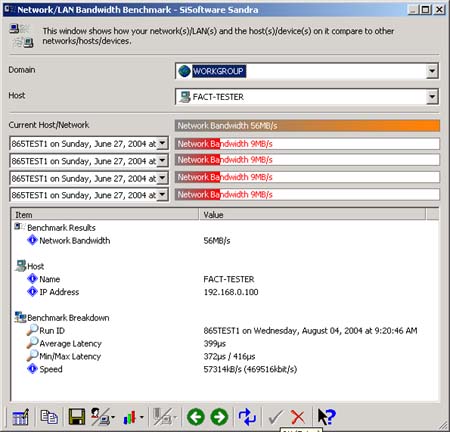
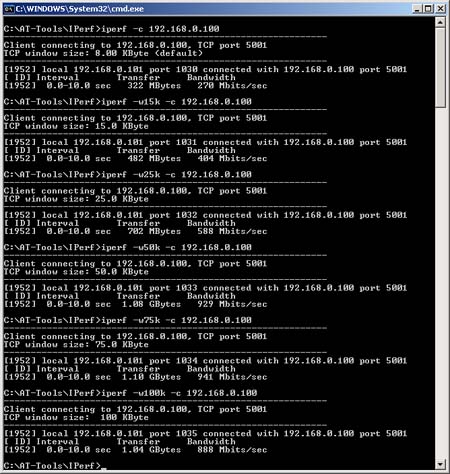
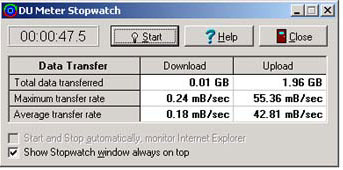
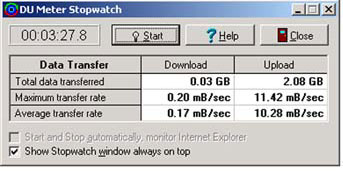
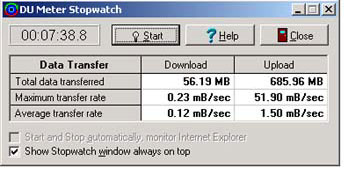
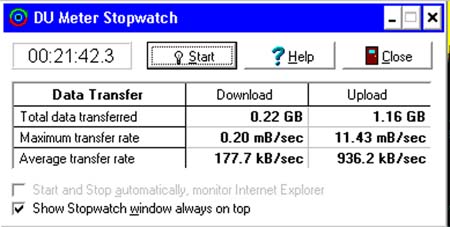








12 Comments
View All Comments
starjax - Wednesday, August 11, 2004 - link
Ghost is nortious as a network hog. I have a smc 16port, linksys 16 and 8 ports, and 3com office connect hub. all support 10/100. the switches are autonegotiating/autosensing store an forward. What I noticed is that the different models/brands have different overheads. I average 300MB/min on the 8port linksys. with the smc I get closer to 400 MB/min. The 16 port linksys has a few MB better performance. With Hard drives getting larger and larger it means I have more data to move when deploying new systems here at work. The quicker I can do it that happier I am.Back to my point I would be interested in doing head to head reviews and compare overhead/latnecy, through put, ect.
Starjax
KristopherKubicki - Tuesday, August 10, 2004 - link
Good work brian. Looks like the networking front is fairing better than the linux front at this point!http://anandtech.com/linux/showdoc.aspx?i=2158
Kristopher
douglar - Tuesday, August 10, 2004 - link
Ok, sounds good.I'm no linux expert either, just the one time that i was spec'ing out GbE nic's for servers, the local linux man kept telling me that I was being handicapped by the windows tcpip stack and file copy routines.
I was able to get much higher GbE utilization by copying multiple files at the same time from hardware raid's with many disks. If you have access to some good raids, that might offset the single disk throughput issues somewhat.
I'm also curious about what happens if you have GbE and 100baseTX running at the same time on the switch. Does it buffer well when one card is faster? Will one slow card funk the stew?
If you have a smart switch that records such things, please report packet loss/ re-xmit numbers.
I am very interesed in the Nforce3 250gb card, since it bypasses PCI.
BrianNg - Tuesday, August 10, 2004 - link
#8Since this was the first switch review, I was not sure how detailed to be with the review. I was under a general impression to do some quick benchmarks to see how well it compares to a 10/100 switch.
I am in the process of reviewing another gigabit switch and so far just from the tests I did with the ASUS switch, this switch's performance is lagging with very large files.
The couple RAM drive software that I have seen only allows for the creation of 2 GB RAM drives. For files less than 2 GBs the file copy times between to computer with gig cards are under a minute each.
For using operating system, my expertise is in Microsoft systems. I probably don't know enough of the other UNIX/LINUX systems to do a benchmarking properly.
I should be getting additional NICs and tests machines in the near future.
I'll try to see how much of your other suggestions can I accomodate in the next review.
Also, please keep the comments coming. It helps me to know how detailed I should be when testing the hardware.
Thanks,
Brian
douglar - Tuesday, August 10, 2004 - link
I was a little dissapointed with this review. While the disclosure about the test system was good, the only thing this review told me was that GbE is faster than 100base-tx and that the device in question didn't have any obvoius flaws. I really don't know if it is any better than other GbE switches, etc. As it is, I don't really think this article tested anything other than hard drive speed.I'd suggest the following improvements for the performance testing to identify/remove system bottlenecks-
* Compare using more than one GbE switch
* Use ram drives for at least some of the file copy tests
* Compare using the fastest accepted system bus and nic. If we don't know the fastest, test with more than one type of NIC/bus.
* Compare using more than one operating system
This would tell me how this switch compares against other comparable switches, and would help remove/identify bottlenecks from the testing such as NIC, NIC system bus, NIC driver, operating system, and hard drive speed.
Other than straight performance benchmarking, there are some other "tests of quality" that would have been nice to see:
* Test with different speed nics
* Test with max length cables for signal strength
* Test with low quality cables
* Test with multiple copies at the same time
* Test with 4+ computers at the same time
douglar - Tuesday, August 10, 2004 - link
Dranzerk - Tuesday, August 10, 2004 - link
Nice to know I can still use Cat5 network with a simple upgrade. Being lots of houses build with networks built in now Cat5 vs cat5e was actully was not a PUSH like cat5 was in the houseing market, so many houses today are still useing Cat5 for networks simply cause the only real diffrence is interference and you don't get than at all in Walls of house anyways :PSpaceRanger - Tuesday, August 10, 2004 - link
Being that AT is relatively new to Networking reviews, I felt this was a good first try at it. Keep up the good work Brian.BrianNg - Tuesday, August 10, 2004 - link
#1Let me check on that, and I'll get back to you.
#3
Thanks for the comments. The addition of additional clients is something planned for the future. I am in the process of adding additional equipment to the lab. As for the other tests that you recommended, I'll see how much of it I can squeeze into the next review.
Thanks,
Brian
Yozza - Tuesday, August 10, 2004 - link
The review ends up more or less just testing the performance of the Intel Pro/1000 CT NIC rather than the switching fabric - showing that it can get pretty damn close to wire speed at 1Gbps, although you didn't test bi-directional throughput.How about also testing with multiple hosts, a range of frame sizes and traffic patterns, measurements of switching latency/jitter, head-of-line blocking, etc? I suspect the switch fabric would be rather more stressed with multiple hosts and smaller frame sizes, especially with data traversing between the two Marvell 4xGbE PHYs.
Indeed, jumbo frame support would be useful for increasing throughput and reducing CPU overhead from packet segmentation, as mentioned in a previous comment, yet it is disappointing that the review doesn't mention or test this at all.
The text of the review also mentions "The device itself is an 8-port GbE QoS switch integrating a high-performance switching fabric with four priority queues". How about testing the effectiveness of its QoS policing with 802.1p or ToS?
I don't mean to criticize the reviewer - obviously some effort has been put into the review, but from a networking standpoint, it looks very amateurish and doesn't really test the product at all.